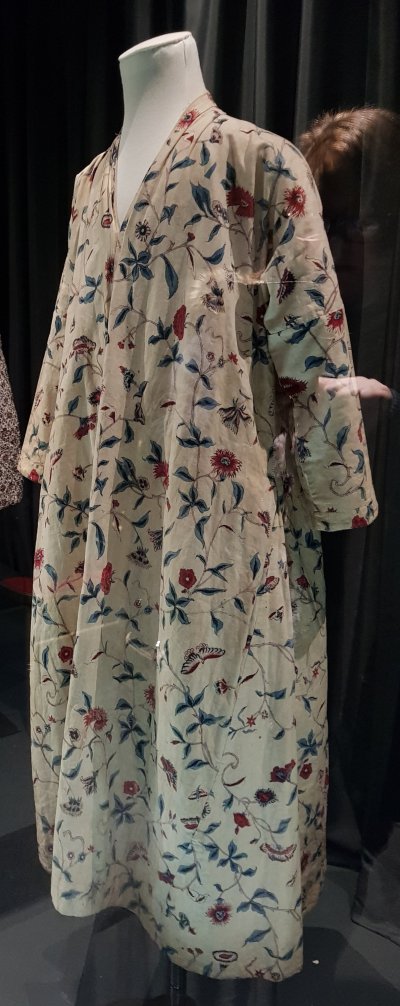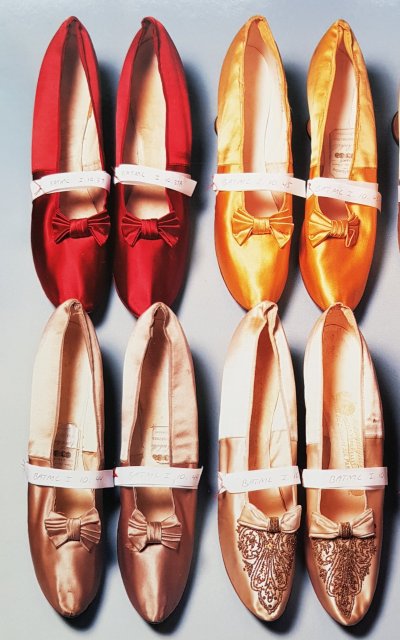I visited Bath Fashion Museum recently, specifically to see their special exhibition at the Fashion Museum, Royal Women: Public Life, Personal Style that you can read about here.
They have many ‘treasures’ in their collection and I have posted a short series sharing with my readership the fashions of previous centuries.
In ‘Part One’ I focused on items that the museum displayed from before the nineteenth century, in ‘Part Two’ I looked at fashions from the end of the eighteenth century and through the nineteenth century, in the third post I shared fashions from the twentieth century. In this fourth and final post I will showcase some of the children’s clothes and shoes .
You can read Fashion Museum: A History of Fashion in 100 Objects – Part One here.
You can read Fashion Museum: A History of Fashion in 100 Objects – Part Two here.
You can read Fashion Museum: A History of Fashion in 100 Objects – Part Three here.
All photos are taken by me unless stated – as is normal for such exhibitions there is a no flash photography rule which can impact any snaps I take, plus the reflection from lighting on glass does cause issues, so there will be some imperfections in the photos. In some cases (in all Fashion Museum posts) I’ve taken a judgement call to post an imperfect shot for the benefit of the article.
Children’s Clothes

New-born babies would be wrapped in swaddling clothes (long strips of linen). The slip dresses above, would have been worn after about four months old. The patterned material meant any dirt was obscured for clothes were washed infrequently as soap was expensive.

Above is a boy’s banyan, or dressing gown, made of chintz, a fabric that originated in India. By law, chintz was only available in England to export to other countries, but it proved a popular fabric and was smuggled into the country for the English to use.

Above is a pelisse, a hugely fashionable coat during the early nineteenth century. Adult fashions sometimes passed into children’s wear and this is a girl’s example from the 1810s. It is made of cotton.
Left is a sailor suit that was fashionable for boys during the nineteenth century probably due to Queen Victoria dressing the young princes in such garments. To the right is a classic smock dress, trends began to change during the late nineteenth century and looser clothing was more acceptable. The smock would have been worn by a boy or a girl.
Shoes

The Fashion Museum has a charming collection of babies’ booties that have been embroidered or quilted – all from the nineteenth century.

Fashions changed from a chunkier heel to a more slender heel for shoes in the mid-1700s.

Above is a pair of flat silk indoor shoes from the 1810s. Ladies half-boots (ankle boots) were popular (as noted by Jane Austen in 1817) for outdoor wear – and indeed there are examples from later in the century in the Fashion Museum’s collections, but lighter indoor slippers were a more refined option for the regency’s ladies to wear when not walking outside.

The fashion for boots fluctuated once trousers were normal day wear for men. Ever practical when riding, shoes replaced boots when trousers replaced breeches. However, the buckled shoes that had previously been popular were out of favour and men’s shoes now had laces.
The collection of leather and silk shoes and half-boots above is from the later nineteenth century.

The shoes above are from a collection of shoes belonging to Mary Chamberlain, stepmother of Neville Chamberlain. She bought many shoes from the same Paris designers opting for similar styles in different colours. The shoes were donated to the museum after her death in the 1950s.

The shoes above are from the 1920s and would have been designed for best or evening-wear.
Source:
Fashion Museum, Treasures, 2009
https://www.fashionmuseum.co.uk/events/history-fashion-100-objects








Loved it!!! 😍😍
LikeLiked by 1 person
Thanks 🙂
LikeLiked by 1 person
I have narrow feet but I think I would struggle to fit into some of these! One of my favourite museums is the Bata Shoe Museum in Toronto.
LikeLiked by 1 person
They are quite dainty, aren’t they? Before I started this blog I visited the Shoe Museum, Northampton. I never would have thought I’d be visited shoe museums when I started my history degree!
LikeLiked by 1 person
Very interesting!
LikeLiked by 1 person
It’s amazing how elaborate the baby booties are, given how quickly they’d be outgrown. I suppose they would be handed down, though.
LikeLiked by 2 people
Yes, you’d assume, first baby gets everything new, subsequent babies – never a brand new thing!
LikeLiked by 1 person
its amazing how the styles have changed through the years with the types of dress for boys and girls and the shoes, very well made to last this long to be shown, they were all handmade back then?
LikeLike
Very interesting collection.
LikeLiked by 1 person
Wow. It’s definitely great to see the evolution of fashion. Most especially shoes. I definitely love them shoes 😊
LikeLiked by 1 person
My favorite exhibits in history museums are always fashion related! Seeing the pieces in person is always so much better—the detail and richness is always impressive!
LikeLiked by 1 person
I recently went to a Queen Victoria exhibition, I was thrilled to see her dresses, much more fun than ornaments! 🙂
LikeLiked by 1 person
Oooh!!! Very cool!!
LikeLiked by 1 person